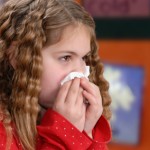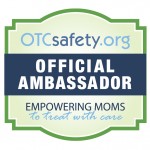 Winter is upon us and with that comes colds, allergies (yes, during winter), and dry air. Add in the common childhood habit of nose picking and you’ve got a perfect combination of factors that can lead up to nosebleeds in children.
Winter is upon us and with that comes colds, allergies (yes, during winter), and dry air. Add in the common childhood habit of nose picking and you’ve got a perfect combination of factors that can lead up to nosebleeds in children.
Nosebleeds (epistaxis is the medical term) in children are extremely common, especially among the 3-10 year olds. They are easily treated and are rarely a sign of a serious problem.
Still, as a parent, I realize it’s hard not to freak out when you see blood coming from your child’s nose. Especially, when it seems like so much blood is pouring out.
So, let’s get straight to what to do if your child gets a nosebleed:
- Remain calm, I know I already said this but it’s worth repeating
- Have your child sit down and tilt his head slightly forward, NOT backward, and gently apply firm pressure (pinch) to the soft part of your child’s nose. Keep holding it there for 10 minutes without letting go. Use a washcloth to soak up the blood.
- Remember to not let your child lean his head back during this time. Otherwise, blood will flow to the back of his throat causing him to gag and possibly vomit.
- After 10 minutes has passed, gently release pressure. Most nosebleeds will have stopped by now. If not, repeat for another 10 minutes. If nosebleed lasts longer than 20 minutes, seek medical attention.
- Have your child rest for awhile after a nosebleed. No need to risk a re-bleed so soon.
What conditions lead to a nosebleed?
- Dry air, both indoors and out. Winter sure lends itself to dry, windy conditions and dry heat indoors exacerbates this dryness. Little noses easily become dry, irritated, and itchy which makes those tiny capillaries prone to easy bleeding especially when picked.
- Colds and allergies: nasal congestion and inflammation also leads to irritation and easy bleeding of those tiny blood vessels. Blowing the nose too hard and nose picking can lead to a nosebleed in these conditions.
- Trauma. A ball to the face or a fall on the face can also trigger a nosebleed.
Prevention:
- Use a cool mist humidifier in your home to add some moisture back to the dry air. This will help keep those nasal membranes moist, and thus, less irritated.
- Use normal saline nose drops to wash out congested noses (from colds or allergies) and will also help the dryness factor.
- Put some Vaseline around the nasal openings to maintain moisture and provide barrier to dryness and irritation.
- Discourage nose picking as much as possible! Keep those finger nails short.
When to worry and seek medical attention:
- Nose doesn’t stop bleeding after 20 minutes of firm pressure.
- Your child seems to get frequent nosebleeds, more than one per week. This may warrant a referral to an Ear Nose Throat specialist to examine your child’s nose and blood vessels. Occasionally, they may need to cauterize one of those tiny blood vessels that is prone to bleeding.
- You think your child has put something in her nose. Yes…it happens. Ask any pediatrician or MD working in the ER or urgent care…we’ve all removed a tiny bead from a tiny nose. Ouch!
- Your child bruises easily and seems to get frequent nosebleeds. This could be a sign of a clotting disorder.
- Your child is taking a new medication and with that, the nosebleeds seem to have started. Certain medications can interfere with your child’s natural clotting mechanism.
The take home message is this: nosebleeds are common and are typically nothing to worry about. Do your best to remain calm, reassure your child and follow the technique outlined above for getting the bleeding to stop.
Is this winter weather provoking nosebleeds in your child? Do you feel better knowing that you can treat it with ease?
Pin It








My son gets frequent nosebleeds at night all year long. It’s definitely helped us to be more mindful of clearing his nose out before bed and using the Vaseline trick. His last nosebleed stopped bleeding very quickly.
I have had nosebleeds my entire life. Awful. This is wonderful, thank you.